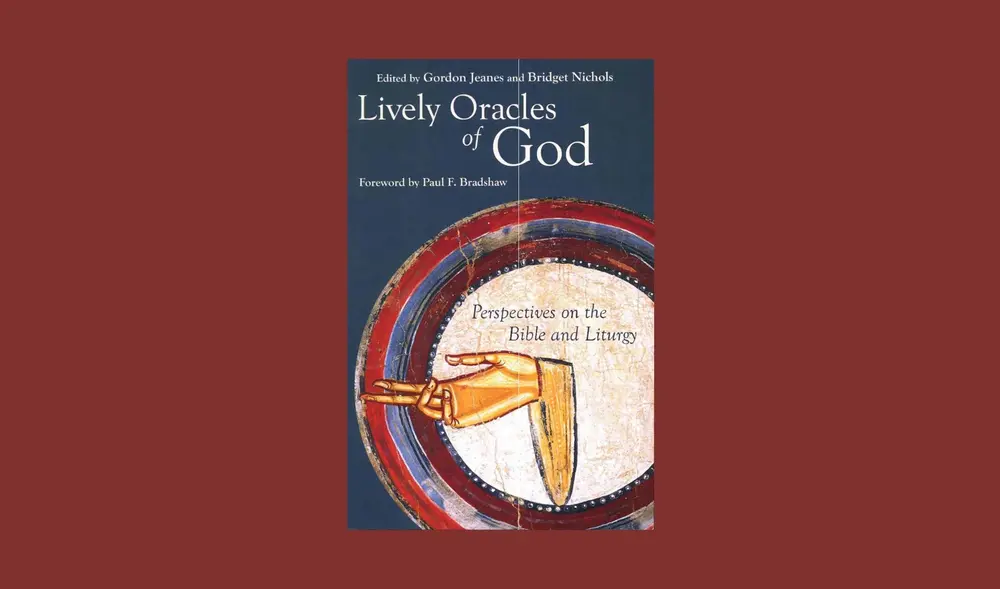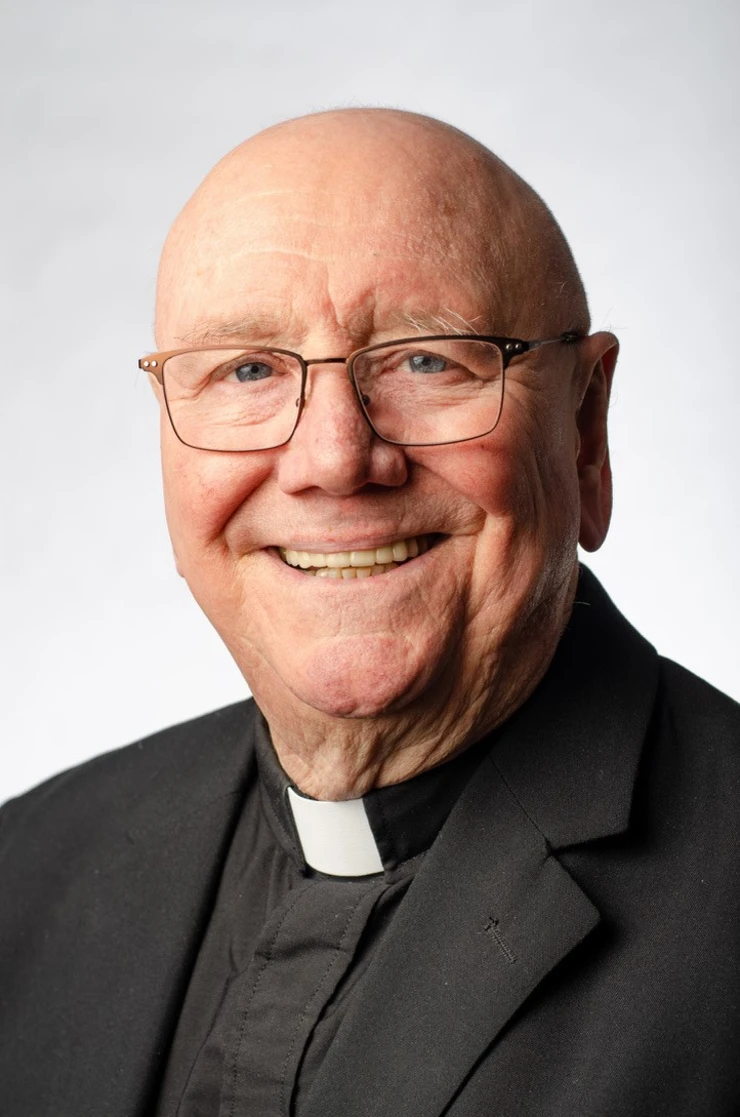Biblical Literacy and Illiteracy

Last year theologians of different Christian confessions came together to publish the book “Lively Oracles of God”. The contributions are influenced by the traditions of different countries, churches and theologies. On our blog, we will dedicate the upcoming weeks to some of the ideas presented in the book, which we will make available both in English and in a German translation. After an essay of the Anglican theologian Bridget Nichols follows a contribution of the US-American Jesuit John Baldovin with the title "Biblical Literacy and Illiteracy".

The story is told of someone walking into a jeweler’s shop in the United Kingdom and asking for a cross. “Sure,” says the salesperson. “Would you like a plain one or one with a little doll on it?” The salesperson could well have not come from a Christian background, but in any case the tale (perhaps apocryphal) is emblematic of the religious illiteracy of a good many people in our contemporary societies. Obviously, such illiteracy represents a considerable challenge not only for religion in general but particularly for participation in liturgy, a participation which presupposes at least some familiarity with the Christian Bible (Old and New Testaments).
In a 2012 article entitled “Is the Liturgy Hitting its Target?” [1] I suggested that one of the ways that the liturgical reforms of the past half-century have not been successful (especially but perhaps not solely in the Roman Catholic Church) has been in the area of biblical appreciation. After all, one of the objectives of Vatican II’s Constitution on the Sacred Liturgy (Sacrosanctum Concilium) was to provide worshipers with a “richer fare” of biblical readings. To what extent the current lectionaries, which owe a great deal to the Catholic reform, have succeeded is a good question. I would suggest that even attempts like the laudable efforts to provide richer fare will fail if the Bible is proclaimed in a cultural vacuum.
I do not mean to max too nostalgic about the past but the “Catholic world” in which I grew up was filled with religious symbolism. It was certainly not uncommon for our mothers to have “kitchen Madonnas” hanging on the wall and certainly every bedroom had a crucifix. This Catholic imagery helped us make sense of the biblical world that we may not have appreciated in a sophisticated or educated manner, but was at any rate a world which made sense of our lives. Except for small pockets of traditional believers (of every Christian stripe) that world is gone.
Today by and large we cannot expect people to bring any knowledge of the Bible to their liturgical experience.
This difficulty is compounded by the fact that the liturgy itself – and especially the way most mainline churches construct the lectionary and liturgical cycle –presupposes at least some familiarity with the Christian message. The estimable liturgical scholar Robert Taft frequently contended that anamnesis and not kerygma is essential to the way we celebrate liturgy:
Kerygma is preaching the Good News to awaken the response of faith in the new message not yet heard. But the kerygma is written down and proclaimed repeatedly in the liturgical assembly to recall us to our commitment to the Good News already heard and accepted in faith, even though "we know them and are established in the truth" (2 Pet 1:12), is memorial, anamnesis, and that is what all liturgy is about. [2]
Taft is right in claiming that traditional liturgy is based on anamnesis rather than initial proclamation of the gospel (kerygma). That, however, must be regarded as a rather purist or idealized position, for the question today is whether such understanding and practice of liturgy is really effective. I fear that in our dominant secularized culture the practice of liturgy needs to be at least as kerygmatic as it is anamnetic.
Paul Bradshaw makes a credible case for the multiple ways in which the Bible has functioned in the liturgy. His approach is more flexible than Taft’s for he acknowledges that the boundaries between the didactic (kerygmatic) and anamnetic use of the Bible in liturgy are somewhat fluid. He is worth quoting at some length here:
The boundaries between the first two types of ministry of the word are inevitably somewhat blurred. An anamnetic ministry of the word will exercise a didactic function for those who are unfamiliar with the tradition, and readings which were first intended to be didactic can in the course of time become anamnetic, as they grow in familiarity to the hearers and become associated with particular occasions. It may be argued that this is in large part what happened to the Sunday eucharistic lectionary in both East and West. [3]
Let us take a classic example: the nativity story from Luke 2 on Christmas. In line with the medieval Roman liturgy the Roman Catholic missal and several other churches as well provides for three Masses and three sets of lectionary readings for Christmas – during the night, at dawn, and during the day. The gospel readings are respectively: Luke 2:1-14 (night), Luke 2:15-20 (dawn), and John 1:1-18 (day). I submit that in the vast majority of congregations it would be foolish to use anything other than the traditional “Christmas story” as the gospel reading for the day.
No matter how theologically rich and appropriate the prologue to John’s gospel may be there are occasions on which the expectation of a particular reading should take precedence because of people’s familiarity, and Christmas is clearly one of them. The kerygmatic and anamnetic functions of reading Scripture in church clearly combine in this case.
As I noted at the beginning of this post most contemporary societies suffer from massive biblical illiteracy. This biblical illiteracy is part and parcel of a more widespread cultural illiteracy as any number of contemporary social commentators have lamented. [4] One anecdotal example: I can recall a comment in a graduate-level course evaluation over twenty years ago to the effect that I had used the phrase “between Scylla and Charybdis” in a lecture as though everyone understood it. It was a wake-up call. The common cultural heritage that I simply assumed because of my own classical education was no longer relevant to my students. I could have been speaking a foreign language. I’m not trying to argue here that everyone should read Homer nor am I arguing for a mainly Euro-centric education. I do want to point out, however, that it is no longer possible to assume a basic and common cultural background either in education or a fortiori in church.
As Stephen Prothero put it rather strongly with regard to the United States: “[w]e Live in a Land of Biblical Idiots”. [5] Timothy Larsen tells the story of British university students who after a tour of the Uffizi Gallery in Florence “decided that Italian parents did not value daughters because although they were fond of depicting mothers, the baby was always a boy.” [6] Of course, they were talking about Jesus! I could go on giving examples, but I think it is fairly obvious that most people in advanced industrial societies are biblically illiterate and therefore that to enable the Bible to be heard a massive amount of catechesis/proclamation needs to take place.
Traditional means do not seem to be sufficient in order to do this. Modern social media and marketing techniques need to become commonplace among those wishing to evangelize. Of course, evangelicals have known this and have practiced proclamation of the gospel in the public square through radio and television for a long time. Luckily, other seem to be catching on. To single out American Roman Catholics, popular figures like Bishop Robert Barron and Fr. James Martin, S.J. have had a significant impact in this regard. Now we can add the internet to these traditional means of mass media.
All of us who are committed to the promotion of good liturgy – and indeed to the spread of the Christian faith – should strive earnestly to support a culture where biblical literacy might become less prevalent just as we should strive to make the Scripture more compelling in the liturgies we celebrate.
[1] John Baldovin, “Is the Liturgy Hitting its Target?” The Jurist, 72 (2012), 453-465.
[2] Robert Taft, “What is a Christian Feast? A Reflection,” Worship 83 (2009), 2-18, here at 13.
[3] Paul Bradshaw, “The Use of the Bible in Liturgy: Some Historical Perspectives,” Studia Liturgica 22 (1992), 32-38, here at 41.
[4] I’m not sure I would want to be classed with authors who simply lament the passing of classical Western culture, but they do describe the loss of a certain commonly held body of knowledge. Some examples are Richard Arum and Josipa Roksa, Academically Adrift: Limited Learning on College campuses, Chicago: University of Chicago Press, 2011 and Allan Bloom, The Closing of the American Mind: How Higher Education has Failed Democracy and Impoverished the Souls of Today's Students, New York: Simon and Schuster, 1987. See also Stephen Prothero, Religious Literacy: What Every American Needs to Know – and Doesn’t, San Francisco: HarperSanFrancisco, 2007.
[5] Stephen Prothero, “We Live in a Land of Biblical Idiots,: Los Angeles Times, March 24, 2007, cited in Timothy Larsen, “Literacy and Biblical Knowledge: The Victorian Age and Our Own,” Journal of the Evangelical Theological Society, 52 (2009), 519-539, here at 529.
[6] Larsen, “Literacy,” 528.
John F. Baldovin SJ is Professor of Historical and Liturgical Theology at the Boston College School of Theology and Ministry. He received his BA from the College of the Holy Cross, an MDiv from Weston School of Theology, an MA, MPhil and PhD from Yale University. Research and teaching at Fordham University, the Jesuit School of Theology at Berkeley, Weston Jesuit School of Theology. He was visiting professor at The University of Notre Dame and St. John Vianney National Seminary in Pretoria, South Africa. He is past president of the N. American Academy of Liturgy and of the international ecumenical Societas Liturgica. He received numerous awards and served on many theological committees, such as ICEL. Numerous publications, a.o.: City, church, and renewal. Washington DC: Pastoral Press 1991; Reforming the liturgy. A response to the critics. Collegeville MN: Liturgical Press 2008; Catholic Sacraments. Rich Source of Blessings (ed. with David Turnbloom), Mahwah, NJ: Paulist Press 2015.
